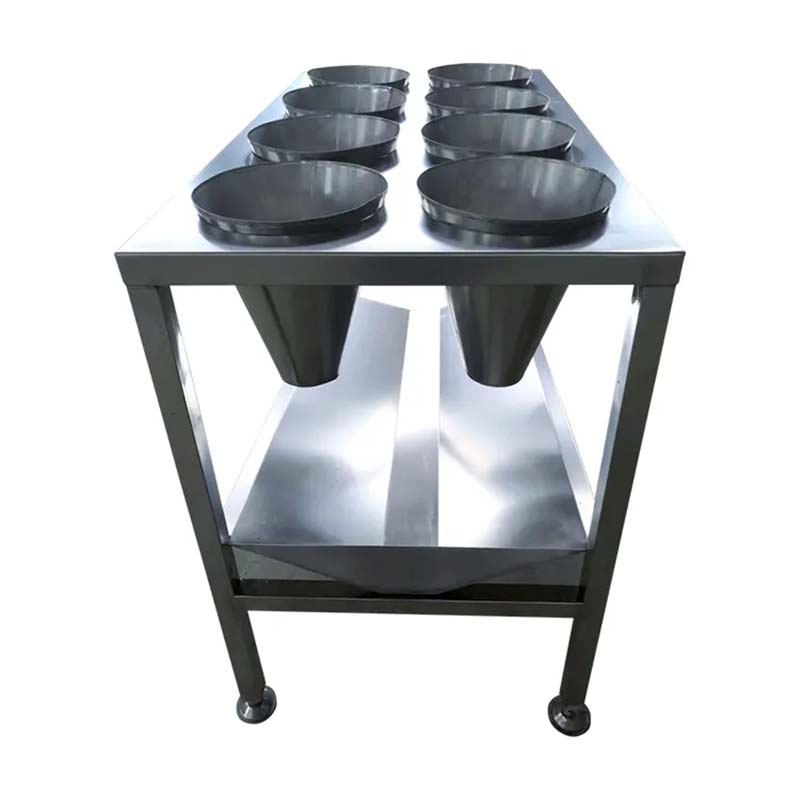Efficient Floating Fish Feed Production Machine for Aquaculture Success
Nov . 26, 2024 22:16 Back to list
Efficient Floating Fish Feed Production Machine for Aquaculture Success
The Evolution and Importance of Floating Fish Feed Making Machines
In the world of aquaculture, the production of high-quality, nutritionally balanced fish feed is crucial. As the global demand for fish rises, fish farmers are increasingly turning to floating fish feed making machines to meet both quality and efficiency standards. These machines play a pivotal role in ensuring that fish are fed properly, promoting healthy growth rates and optimizing feed utilization.
Understanding Floating Fish Feed
Floating fish feed is specifically designed to buoy on the surface of the water, allowing fish to feed naturally. This type of feed is more visible to fish, encouraging them to eat and reducing feed wastage. The formulation of floating fish feed often includes a mix of protein, fat, vitamins, minerals, and carbohydrates tailored to the specific dietary needs of various fish species. This ensures that the fish grow healthily and efficiently, leading to better yields for aquaculture businesses.
The Role of Fish Feed Making Machines
Floating fish feed making machines are essential in the production of this specialized feed. These machines can automatically blend, extrude, and pelletize ingredients to produce floating pellets of various sizes. The process typically involves several key steps, including raw material preparation, mixing, extrusion, drying, and cooling.
1. Raw Material Preparation The quality of the raw materials used greatly impacts the nutritional value of the final product. Ingredients like fish meal, soy protein, vitamins, and other nutrient sources must be carefully selected and processed.
2. Mixing Proper mixing is critical to ensure that all ingredients are evenly distributed. Advanced fish feed making machines have powerful mixers that can handle large volumes and maintain consistency in product quality.
3. Extrusion This is one of the most vital phases in the production process. The mixed ingredients are subjected to high temperature and pressure in an extruder. This not only helps in shaping the feed into pellets but also gelatinizes the starches, making them more digestible for fish.
4. Drying Once the pellets are formed, they need to be dried to reduce moisture content. This step is crucial to enhance the shelf life of the feed and prevent spoilage.
floating fish feed making machine

5. Cooling The final stage involves cooling the pellets to room temperature, ensuring they retain their shape and quality for packaging and storage.
Benefits of Using Floating Fish Feed Machines
The adoption of floating fish feed making machines has several advantages
- Efficiency These machines automate the production process, significantly reducing labor costs and time. They can produce a large quantity of feed in a relatively short period, thus meeting the demands of growing aquaculture farms.
- Quality Control Automated machines provide better control over feed formulation and production consistency. This leads to higher quality feed that meets the specific nutritional needs of fish, encouraging optimal growth rates.
- Reduced Waste By producing floating feed, these machines help minimize feed wastage. Fish can consume the feed more readily, lessening the impact on water quality and resources.
- Adaptability Modern fish feed making machines are versatile, allowing for the production of different feed types, including those tailored for various aquatic species. Farmers can adjust formulations based on the needs of their specific populations.
Future Trends in Fish Feed Manufacturing
As aquaculture continues to grow, the demand for innovative and efficient fish feed production methods will rise. The integration of technology, such as automation and artificial intelligence, will further enhance the capabilities of floating fish feed making machines. This evolution will enable fish farmers to respond quickly to market demands and environmental challenges, ensuring sustainable fish farming practices.
In conclusion, floating fish feed making machines are vital to the aquaculture industry. They not only streamline the production process but also help meet the increasing demand for high-quality fish feed. By continuing to innovate in this area, the aquaculture sector can play a significant role in ensuring food security and sustainable practices for future generations.
-
High Performance Exhaust Fan – Efficient Ventilation Solutions for Home
NewsJun.10,2025
-
High-Quality Gestation Pen for Sows Durable Mobile Pig Pen & Simple Pig Pen Solutions
NewsJun.10,2025
-
High Quality Rabbit Cage Double Tier Designs & Welded Wire Mesh Supplier
NewsJun.10,2025
-
Floating Fish Feed Machine - High Efficiency Floating Fish Feed Extruder for Small Scale Production
NewsJun.10,2025
-
Premium Poultry Housing Solutions Mobile & Commercial Free Range Options
NewsJun.10,2025
-
Industrial FRP Fans Corrosion-Resistant Blades & Centrifugal Systems
NewsJun.09,2025






